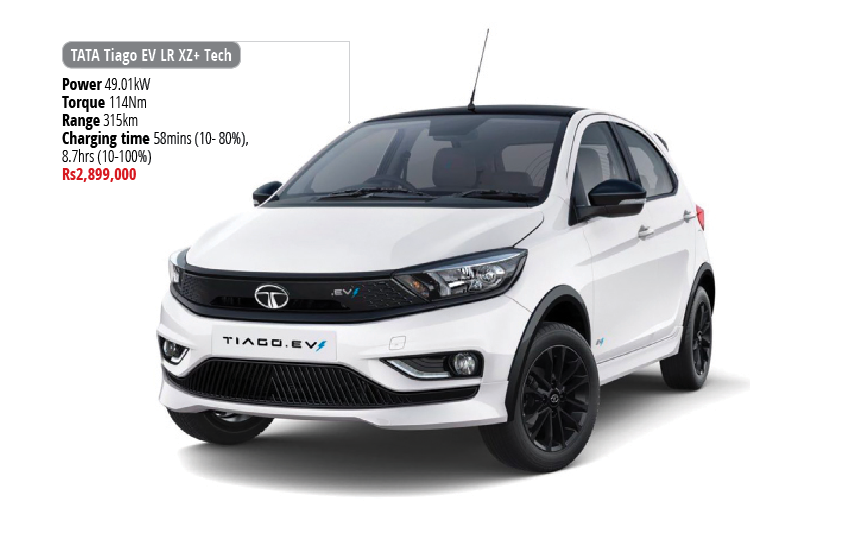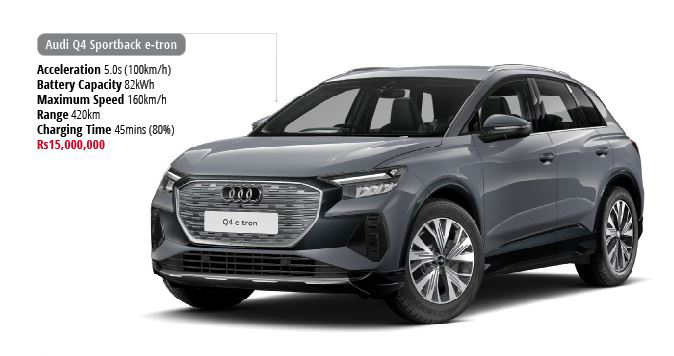EVs, Hybrids, and Plug-ins
Whichever you choose, there is a range of choices of models and propulsion systemsNepalis looking to splurge on a new car for the new year might want to think about electric or hybrid options. Gone are the days of small, claustrophobic EVs, there are now battery-powered cars that are as green as they are cool.
If you have been out on Kathmandu’s roads these days, and with the air quality being what it is this week we understand if you have not, there seems to be a lot more battery-operated vehicles on the streets. As range improves, there are a lot more EVs even on the highways, negotiating the mud and dust.

The numbers back this up. By March, nearly 6,500 electric vehicles had been imported into Nepal in the six months of the fiscal year. During the same period last year, this number was only 2,198.
The battery-powered cars in Nepal are imported from China, India, Indonesia, the United States, South Korea, and now from Germany. Import numbers of electric three-wheel taxis also show an increase of 54% from 5,380 to 8,303.

This means the contribution of vehicular emissions to air pollution levels in Kathmandu Valley is going down, although the other sources (wildfire smoke, roadside dust, and transboundary pollution) are getting worse.
The bigger change can be in Nepal’s petroleum import bill, which makes up nearly a quarter of total imports. Nepal Oil Corporation (NOC) reports that petrol and diesel demand has gone down slightly, but there will have to be a lot more electric public transport and private cars to make a dent on the trade deficit.

Besides fully battery-powered cars, hybrids and plug-in hybrids are also available, although the numbers so far are tiny. Only 17 hybrids were imported in February-March, and 21 in March-April.
Hybrids tend to be more expensive than fully electric cars, and they also need more specialised maintenance backup since they have both a gasoline engine and an electric motor.


The difference between regular hybrids and the plug-in hybrids is in how the battery is charged to power the electric motor. Regular hybrids charge their batteries while driving, and there is regenerative braking which means the motor turns into a generator to charge the battery. Also, when the petrol engine is producing more power than the car needs, the car’s computer routes the extra energy to the battery.
Plug-in hybrids have these capabilities as well, but can also be plugged in to wall sockets for charging. While the electric motors in regular hybrids only assist the gasoline engine, plug-in hybrids can run entirely on the charged battery just like in EVs, and switch to gas when it runs out.


Regular hybrids, plug-in hybrids, and electric vehicles all save fuel and are better for the ecology and economy than petrol or diesel cars. There are, however, trade offs in choosing any one kind.
A fully electric vehicle will use no fossil fuels at all, so it is the best in reducing emissions. But they can be expensive up front, and are limited by range because of the lack of charging infrastructure. Charging is slow, which is not ideal during long trips.


Electric cars have not been around as long as regular ones, so maintenance experts and replacement parts are harder to come by.
A regular hybrid does not need to be plugged in at all, so there is no range anxiety. However, it is going to use more fuel, leading to a higher running cost and some emissions. There are more components, so there are more things that can go wrong.


A plug-in hybrid offers the most flexibility as it can run on either electricity or fuel. However, the battery capacity is limited and fuel is the option on longer drives. The price tags of these cars are much higher.
There is some debate about battery-powered cars not being as climate friendly as claimed because of the lithium, cadmium and other raw materials needed for batteries and electrodes have to be extracted through energy-intensive methods.


A lot more lithium and other resources goes into making fully electric cars simply because they need higher capacity batteries. The same lithium could be used to make many more gas-electric hybrids or plug-ins, leading to a lower carbon footprint over the lifetime of the cars. A Toyota document states that 90 hybrids can be made with the resources to make one fully electric vehicle, reducing carbon emission by 37 times over their lifetime, compared to the electric car.
Whatever you choose to buy, there is a range of choices of models and propulsion systems. BYD, Tata, Hyundai, Tesla, and Audi all offer fully electric vehicles. Toyota and Subaru have popular hybrid options.
writer
